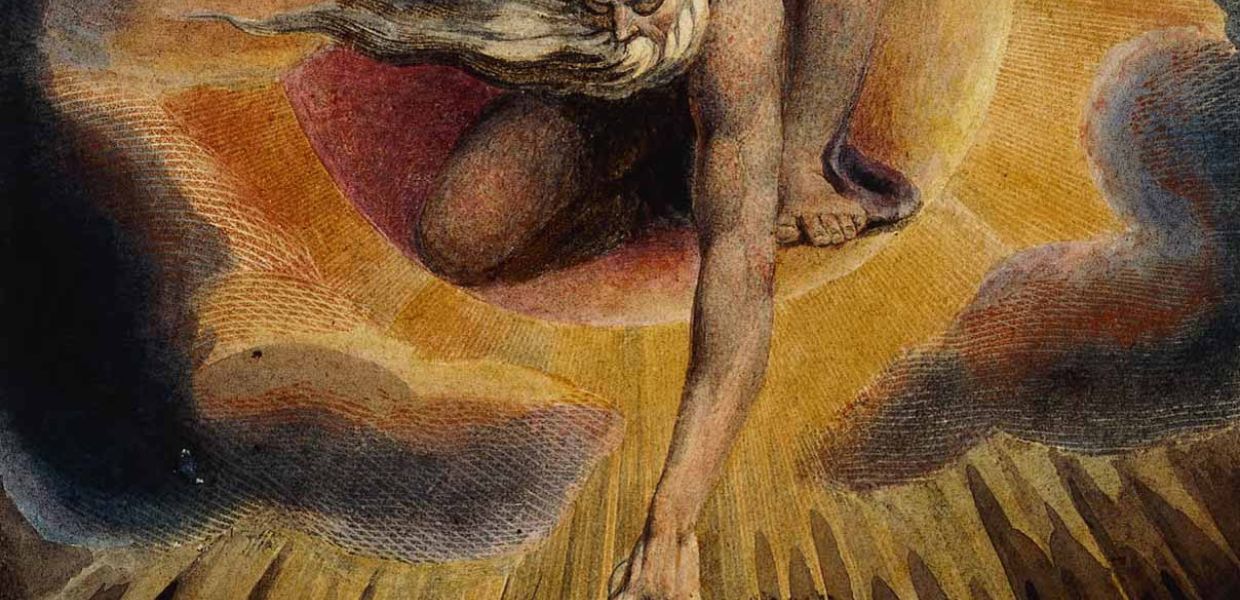Choosing a country's artworks for Europeana 280: England

Continuing our series exploring each country's nominations for Europeana 280, Ann Maher, Europeana 280's Exhibition Coordinator, highlights nominations from England.
The selections from eight English institutions include one of the earliest selections for Europeana 280, the Lindisfarne Gospels from the eighth century.

Europe: a Prophecy (frontispiece), The Ancient of Days (1794), William Blake, The British Museum, cc by nc-sa. A prophetic book by the poet, painter and printmaker William Blake whose personal mythology has no parallels in art.
Defining the landscape (and an artistic rivalry)
Despite the popularity of his paintings today, John Constable’s work was not particularly well received in his lifetime, though he met with success in Paris. The Hay Wain (1821), a selection from the National Gallery, is based on a site in Suffolk, and today, the cottage and river path are much as they were in Constable's time. It was exhibited at the Royal Academy in 1821 (but failed to find a buyer) and then the Paris Salon of 1824 where it was awarded a gold medal by Charles X (that was never collected in person. Constable never travelled outside England).
A great rivalry with another English artist, Joseph Mallord William Turner (who proclaimed ‘I am the great lion of the day’) was played out every year in the annual summer exhibition of the Royal Academy. Held without a break since 1769, it was a fixture in the social season.
The Turner selection from the National Gallery in London is The Fighting Temeraire tugged to her last berth to be broken up, 1838 (1839) and the moment the ship that played a distinguished role in Nelson's victory at the Battle of Trafalgar travelled from Sheerness to Rotherhithe to be broken up. The spectacularly colourful setting of the sun draws a parallel with the passing of the old warship.
Responses to changing society
Artistic responses to the very dramatic changes in society in the 18th and 19th centuries including the philosophies of the enlightenment (and reaction against them) are shown in diverse selections for Europeana 280 from William Blake, Joseph Wright of Derby and William Hogarth. They were turbulent times for artists reacting against the industrialization of society. In the mid-nineteenth century, “Seven young friends who formed the Pre-Raphaelite Brotherhood in 1848 changed the face of British art for ever”, according to the Birmingham Museum & Art Gallery. Admiring the simplicity and clarity of medieval Italian art before Raphael (1483-1520), gave them their name. The selection from Birmingham Museums is The Last of England (1852/1855) by Ford Madox Brown, depicts the point of emigration to Australia – ‘departure in desperate circumstances for a foreign land‘. The Birmingham Museum & Art Gallery holds the most important collection of Pre-Raphaelite art in the world.
Brown trained in Bruges, Ghent and Antwerp and travelled extensively, settling in London in 1846. He worked independently and was also a designer and painter of stained glass and furniture for the firm of William Morris. A commission of frescoes for the Town Hall in Manchester in 1878 was completed in the year he died.
Manchester mill life
Although he is best known for depictions of industrial landscapes, Manchester artist LS Lowry covered a wide range of themes and subjects from portraits to seascapes. He only ever used five colours: flake white, ivory black, vermilion (red), Prussian blue and yellow ochre, according to The Lowry, the arts centre that houses the largest public collection of paintings and drawings of this artist in the world. Their selection, Coming from the Mill, 1930, was described by the artist as ‘my most characteristic mill scene’. According to the museum, the painting is based on an earlier pastel drawing Lowry made in about 1917 which was one of his first composite industrial scenes.
We hope you're enjoying the magnificent art selected for the Europeana 280 campaign via our virtual exhibitions at Europeana Art History or at one of our public digital events.
And follow the conversation on Twitter via #Europeana280
